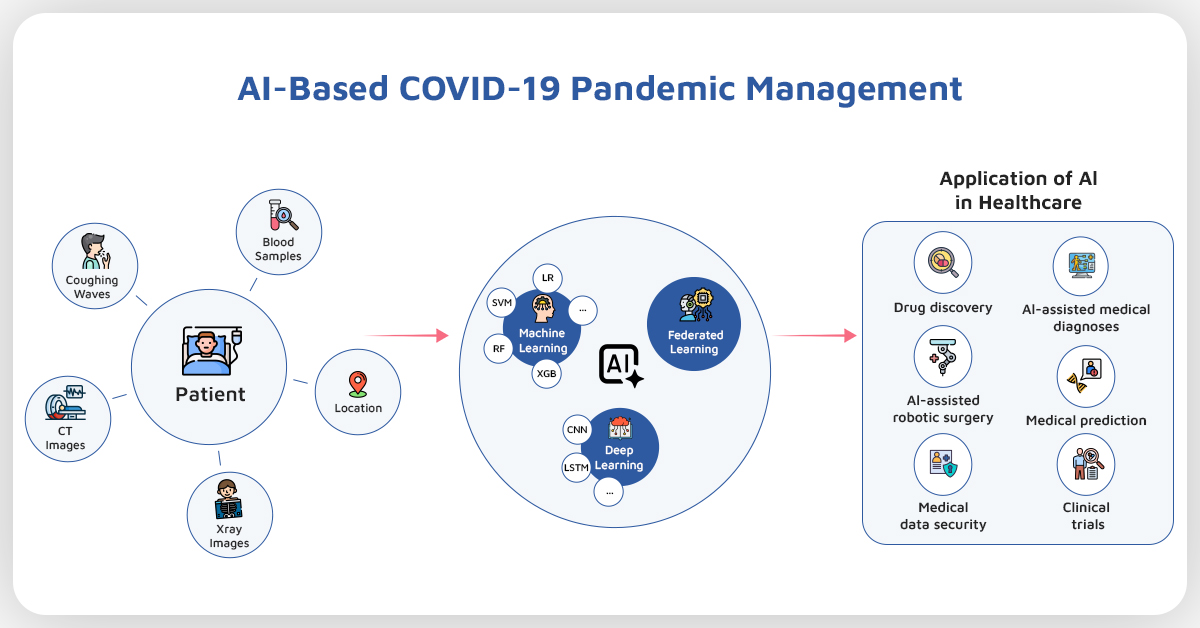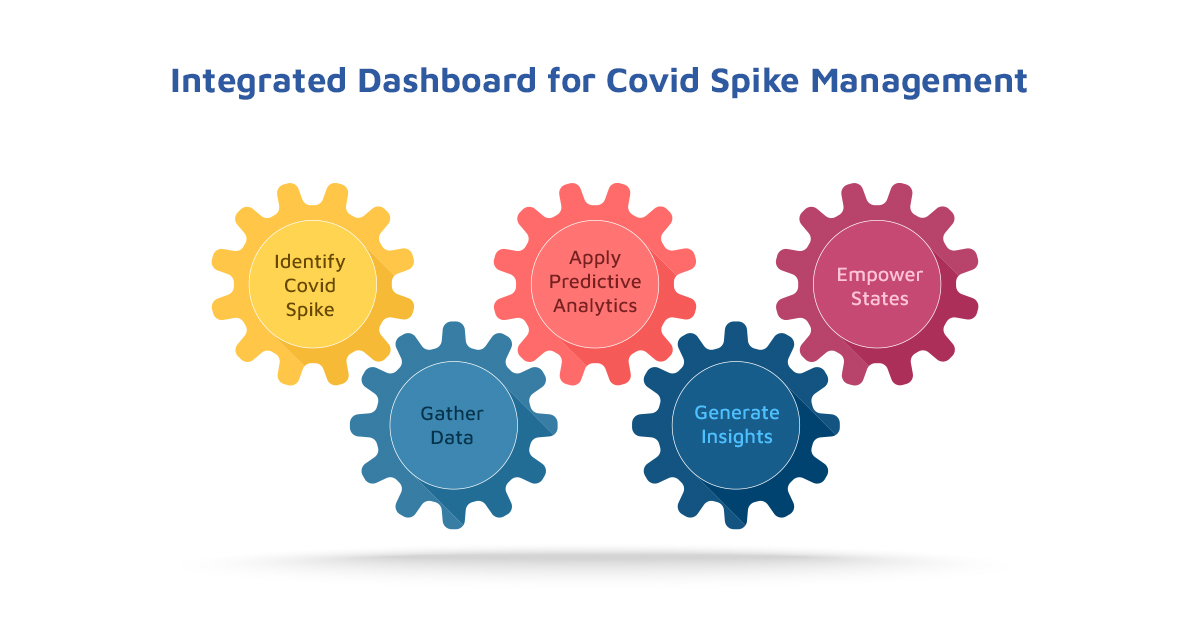When the next wave hits, will your government be ready? The answer lies not in crystal balls, but in data-driven dashboards that transform chaos into clarity.
As we write this blog, fresh COVID-19 cases surge to 7000+ active infections across India in June 2025. Government officials at national and state levels face a familiar yet evolving challenge: managing epidemic spikes with precision, speed, and strategic foresight. The difference between effective pandemic management and reactive scrambling often comes down to one critical capability - analytics-powered integrated dashboards that turn overwhelming data streams into actionable intelligence.
.jpg)
The Digital War Room: Beyond Traditional Dashboards
Think of traditional government response systems as fighting a forest fire with garden hoses—reactive, fragmented, and always one step behind the flames. Analytics-powered dashboards, by contrast, are like having a sophisticated command centre with satellite imagery, predictive weather modeling, and real-time resource tracking all integrated into one unified view.
These aren't your pie charts and bar graphs. Modern integrated dashboards leverage predictive analytics, machine learning (ML) algorithms, and real-time data streams to create what experts call "situational intelligence"—the ability to see not just what's happening now, but what's likely to happen next and what actions will be most effective.
The Odisha State government's COVID-19 dashboard exemplifies this transformation. Serving 46 million citizens across 30 districts, Odisha created what officials call the "single version of truth" for pandemic management. The dashboard integrates data from 25 different systems, tracking everything from patient flows to PPE inventory, while using predictive modeling to forecast hospital bed requirements and ventilator needs at the district level.
The Anatomy of Crisis: Why Predictive Analytics Matter
Traditional pandemic response is like driving at night with broken headlights—you can only react to what's immediately in front of you. Predictive analytics dashboards are the high-beam headlights that illuminate the road ahead, revealing potential obstacles and optimal routes before they become critical.
Research from BlueDot and other AI-powered surveillance systems demonstrates that predictive models can identify outbreak patterns days or even weeks before traditional surveillance methods. These systems analyze diverse data streams including international travel patterns, social media sentiment, medical supply purchases, and mobility data to create early warning systems that give governments precious time to prepare.
Consider the mathematical reality: COVID-19's reproduction rate typically ranges from 1.5 to 4, meaning exponential growth when unchecked. A dashboard using SEIR (Susceptible-Exposed-Infected-Recovered) models can simulate the impact of different intervention scenarios—0% isolation, 80% isolation, or complete lockdown—allowing policymakers to understand the trade-offs between public health and economic activity before implementing measures.

The Social Equity Imperative: Data-Driven Justice
Here's where analytics dashboards move beyond mere number-crunching into the realm of social justice. The Parkland Center for Clinical Innovation's vulnerability index revealed a critical insight: social deprivation—lack of access to food, medicine, employment, and transportation—is a stronger predictor of COVID-19 risk than age, race, or existing health conditions.
This finding transforms how governments should deploy resources. Instead of generic, one-size-fits-all approaches, analytics-powered dashboards enable precision public health interventions. African American and Hispanic neighborhoods identified as high-risk can receive targeted testing, culturally sensitive educational campaigns, and priority access to resources - not as an afterthought, but as a data-driven strategic imperative.
Critical success factors include:
Demand Forecasting: Predicting ICU bed requirements, ventilator needs, and medication supplies with 85-96% accuracy
Supply Chain Optimization: Real-time tracking of PPE inventory, testing kit availability, and pharmaceutical stocks
Workforce Management: Modeling healthcare worker availability, accounting for quarantine requirements and infection rates
Contact Tracing Intelligence: Automating exposure notification systems and quarantine compliance monitoring
The Limits of Digital Solutions
Analytics dashboards are powerful tools, but they're not magic solutions. Several critical limitations demand attention:
Data Quality Dependency: Predictive models are only as good as their input data. Inconsistent reporting standards, delayed data entry, and incomplete information can compromise entire systems. The maxim "garbage in, garbage out" applies ruthlessly to pandemic management.
Algorithmic Bias: Machine learning models can perpetuate existing healthcare disparities if training data reflects historical inequities. Governments must actively audit their algorithms for bias and ensure diverse teams are involved in model development.
Privacy vs. Public Health: Contact tracing and mobility monitoring raise significant privacy concerns. Successful implementations require transparent data governance policies and public trust-building measures.
Technical Infrastructure: Rural and underserved areas may lack the digital infrastructure needed to support sophisticated dashboard systems, potentially creating new forms of health inequality.

Why CSM Tech's COVID Dashboard Represents the Future of Government Crisis Management
When COVID-19 struck India, Odisha and Bihar didn't just survive - they aced pandemic management, thanks to CSM Tech's revolutionary dashboard architecture. While other states scrambled with fragmented data systems, these governments wielded a unified command centre that transformed chaos into clarity.
The CSM Tech difference lies in sophisticated integration. The platform doesn't merely display data; it orchestrates it. By seamlessly weaving together health records, mobility patterns, demographic insights, and even social media sentiment, the dashboard creates an unprecedented 360-degree pandemic view. This isn't just monitoring - it's predictive intelligence.
Consider the technical prowess: real-time stream processing delivers critical updates within minutes, while drill-down analytics enable officials to zoom from state-level trends to individual case tracking instantly. The system's 50+ interactive visualizations serve multiple departments simultaneously, eliminating the dangerous silos that cripple crisis response.
What makes this truly transformative is the proactive capability. CSM Tech's automated reporting and trend analysis enabled Odisha and Bihar to anticipate migrant influx patterns, prevent hospital overcrowding, and optimize resource allocation before shortages occurred. This wasn't reactive governance; it was strategic foresight.
In an era where the next pandemic isn't a question of "if" but "when," governments operating without integrated analytics aren't just behind, they're vulnerable. Our platform represents the evolution from crisis management to crisis mastery.
The Future Vision: From Reactive to Predictive Governance
Imagine a government that doesn't just respond to health crises but anticipates and prevents them. This is the transformative potential of analytics-powered integrated dashboards—shifting from reactive crisis management to predictive population health governance.
Future dashboard capabilities will likely include:
Multi-pathogen Surveillance: Systems that simultaneously monitor COVID-19, influenza, RSV (Respiratory Syncytial Virus), and emerging infectious diseases
Climate-Health Integration: Incorporating environmental data to predict how weather patterns, air quality, and climate events affect disease transmission
Social Determinant Modeling: Real-time analysis of economic indicators, housing stability, and social cohesion as predictors of health outcomes
Genomic Surveillance Integration: Rapid analysis of pathogen mutations and their implications for vaccine effectiveness and treatment protocols
Building Tomorrow's Response Today
The question isn't whether the next pandemic will come—it's whether your government will be ready. Analytics-powered integrated dashboards aren't luxury items for tech-forward states; they're essential infrastructure for protecting public health in the 21st century.
For National Government Leaders: Invest in standardized data collection protocols and interoperability standards that enable seamless information sharing between states and federal agencies. Establish national analytics competency centers that can rapidly deploy dashboard capabilities during emergencies.
For State and Local Officials: Begin building your analytics infrastructure now, during the relative calm between crises. Partner with technology providers, academic institutions, and healthcare systems to create integrated data ecosystems. Train your teams on dashboard utilization and evidence-based decision-making.
The next epidemic spike is not a matter of if, but when. Governments that invest in analytics-powered integrated dashboards today will save lives, resources, and community trust tomorrow. The data is clear, the technology is available, and the need is urgent.
The only question remaining is: Will you be ready?
It’s because when lives are on the line, data-driven decisions make all the difference.










































We will verify and publish your comment soon.